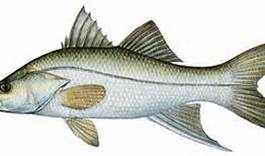
Somehow we got to talking about Snook and our eagerness to catch one this year. Bert nodded his head in agreement. He knows how exciting it is to bring one in the boat and added how tasty they are on a dinner plate. Of all the fish he's caught and eaten over the years, Snook is his all time favorite. He went on to tell us a story about being at the 'intake' in Crystal River recently on a cold afternoon and he could count a total of 15 fairly large Snook in a nearby canal. They were all congregating together, snuggling up against the rocks where the sun was beating down and warming up the rocky bottom. He just gazed at them in awe. They didn't seem to want to move from that spot. It was a pretty amazing sight. Reports were coming in that they were being caught all up and down the Crystal River coast and in King's Bay so they seem to have made a tremendous come back. His bait of choice was small finger-mullet. Capt. Dan Clymer, our guest speaker last month, had hinted that we could find Snook in the Salt River between April and May. Bert added that Snook could be found wherever there was any type of intersection of water. They lay in wait as bait fish get caught in some rushing water and BLAM - free meal!
A quick mention about bait fish...
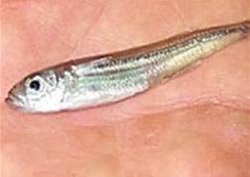
We moved to the topic of different types of bait, starting with live, natural bait. Bert asked if any of us had a cast net for catching bait and the room was silent. None of us had, of course, but it's a technique we'd like to learn at some point in the future. He propose that we start with a six foot cast net which is relatively small and get used to the feel of putting a part of it in the mouth. Using your mouth in preparation for the cast is the easiest way to make a smooth cast. There are other ways where the mouth is not used, but it's a little harder to perfect because it requires more shoulder balance. Jennifer Saranzak, our good friend with the FWC recommended practicing the Calusa Method and she forwarded a youtube video as well. http://youtu.be/lOUkj2h2LjI A bucket full of bait fish can harvested by using a cast net vs having to buy it at a bait shop. It's just a matter of investing some time into learning the throw/cast technique. Once you have a nice supply of bait fish at your disposal, it's simply a matter of hooking them through the lip, casting your line and waiting for the reds and trouts to strike....they can't resist!
Target Fish? Anything that takes our bait!
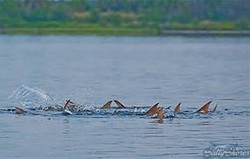
I suppose the three major target fish we're after would be the same as most everyone else here in Crystal River, spotted seatrout, red drum and snook, but hey, we're happy with just about anything that we can reel to the boat and identify. Bert wondered if we'd ever seen a group of redfish tailing. That's when the water is so shallow and larger redfish are scouring the bottom, the tips of their tails protrude out of the water. Some of us had - it's quite a sight to see. You just want the world to freeze in that very moment (except for the tailing redfish, of course) so that you can just watch and observe the beauty and simplicity of their movement. Redfish....just doin' what they do. Throwing a live shrimp on a circle hook with a reliable knot is sometimes all it takes to hook one for yourself. There are a few other artificial lures that Bert suggested might work just as well. They're equally attracted to iridescence and bling, something a little shiny, but when push-comes-to-shove....nothing beats a live shrimp. Everything in the water likes shrimp!!
Time to Tie Some Knots...
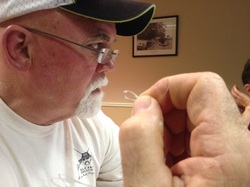
Seems that one of our favorite knot tying websites, www.animatedknots.com , is one of Bert's as well. We were introduced to this site last year when RG Schmidt, the Tight Lines fishing columnist in the Citrus Chronicle gave us a two-day crash course in saltwater fishing. This is one of the best educational sites out there for learning how to tie fishing knots.
The Non-Slip Mono or Loop Knot is one of Bert's personal favorites. He gave us another hand out with a short biography of the creator of this knot, Lefty Kreh, and some detailed information on its advantages and disadvant......oh wait....there were no disadvantages. What?! Many line-to-line and line-to-hook knots are designed in a way that if there is too much pressure applied to the knot, it will actually 'choke' the line enough to break it. This is not one of those knots. One of the major advantages to this knot is that once the tag end is trimmed, it faces the lure which prevents blades of sea grass and other debris from getting caught up in the knot - which happens often with other knots. This can get really annoying when you have to clean your line of weeds every time you pull your lure up out of the water! He suggested practicing at home with monofilament to learn the technique so that when you need to retie to a hook, it'll be easy. Since this is a type of loop knot, it's designed for artificial lures and jigs, anything that is supposed to imitate a swimming motion.
The Non-Slip Mono or Loop Knot is one of Bert's personal favorites. He gave us another hand out with a short biography of the creator of this knot, Lefty Kreh, and some detailed information on its advantages and disadvant......oh wait....there were no disadvantages. What?! Many line-to-line and line-to-hook knots are designed in a way that if there is too much pressure applied to the knot, it will actually 'choke' the line enough to break it. This is not one of those knots. One of the major advantages to this knot is that once the tag end is trimmed, it faces the lure which prevents blades of sea grass and other debris from getting caught up in the knot - which happens often with other knots. This can get really annoying when you have to clean your line of weeds every time you pull your lure up out of the water! He suggested practicing at home with monofilament to learn the technique so that when you need to retie to a hook, it'll be easy. Since this is a type of loop knot, it's designed for artificial lures and jigs, anything that is supposed to imitate a swimming motion.
Time to Practice
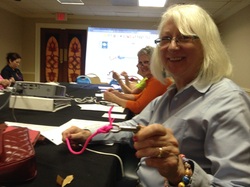
Now that Bert extoled the virtues of the loop knot, it was time to learn how to tie it for ourselves. Virginia went around the room and gave everyone a set of knot tying supplies which consisted of a couple of yards of paracord per girl (to represent fishing line) , and a utility clip to represent a fishing hook. We're nothing if not resourceful! The first piece of advice Bert gave us before practicing our first knot was to make sure that we allowed plenty of extra 'line' to make our loops. It sometimes takes more line than you expect. It's worth the extra pennies an extra foot of fluorocarbon may cost to ensure a good strong knot that'll hold a nice big fish. He took us through a visual step-by-step demonstration with some over-sized knot tying supplies of his own and ending with his final instruction to: "lick it - pull your tag - tighten your knot....pull your tag - tighten your knot....pull your tag - tighten your knot." Once the tag end is clipped, we end up with some beautiful Non-Slip Mono Knots for use with artificial plugs and lures as Gloria is showing in the above photo. The final goal is practicing this over and over again and learn how to make the loop between 1/4 and 1/2 inch in diameter. No more than that. The loop knot allows us to 'present' the artificial lure as it was designed to look to a predatory fish.
Not everyone is comfortable using artificial lures, though. Some of the women are just as happy to stick to the old stand-by of live shrimp or cut bait on a circle hook. The above mentioned loop knot just isn't appropriate for this type of fishing. For this situation, Bert recommended that we use a line-to-hook knot called the Palomar Knot and we spent a few minutes practicing that as well. This knot keeps the hook and bait in one locked position so the angler is in complete control of its movement during line retrieval.
Not everyone is comfortable using artificial lures, though. Some of the women are just as happy to stick to the old stand-by of live shrimp or cut bait on a circle hook. The above mentioned loop knot just isn't appropriate for this type of fishing. For this situation, Bert recommended that we use a line-to-hook knot called the Palomar Knot and we spent a few minutes practicing that as well. This knot keeps the hook and bait in one locked position so the angler is in complete control of its movement during line retrieval.
Time For A Little Fun
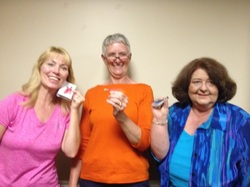
The amount of information Bert shared with us was very much appreciated. The hand-outs he gave us would act as our back-up system just in case we needed to double-check some of our notes when we got home. Then, in true Bert Winkler form, he announced that he brought a few home-made buck-tail jigs to give away as door prizes. As he set them on the table, each in their own little ziplock baggie, you can just visualize all the ladies as their eyes got bigger and their smile got wider. There's just something about a free anything that makes us giddy. Bert pulled three names out of a bowl and the lucky winners were Sue, Virginia, and Donna. Each went home with their very own Bert Winkler original lure.
Nature Coast Challenge - Kayak Fishing Tournament
As Bert was packing up all of his presentation material, Donna handed out invitations to compete in the 3rd Annual Nature Coast Challenge Kayak Fishing Tournament and emphasized the fact that this is a charity tournament sponsored by the Inglis-Yankeetown Lions Club. She went on to describe the wonderfully delicious home made buffet-style dinner that's served during the Captain's Meeting on Friday night and served again at the awards ceremony on Saturday afternoon both with a cash bar (beer / wine) each evening. We'll be looking to get a group of ladies from the club to show support by entering the tournament - if for no other reason than to just have fun, donate to charity and socialize. And who knows.....one of us may actually beat the odds and take home a trophy...it could happen. So if anyone is interested in more information on the tournament, click on the link below.....Hope to see you there.
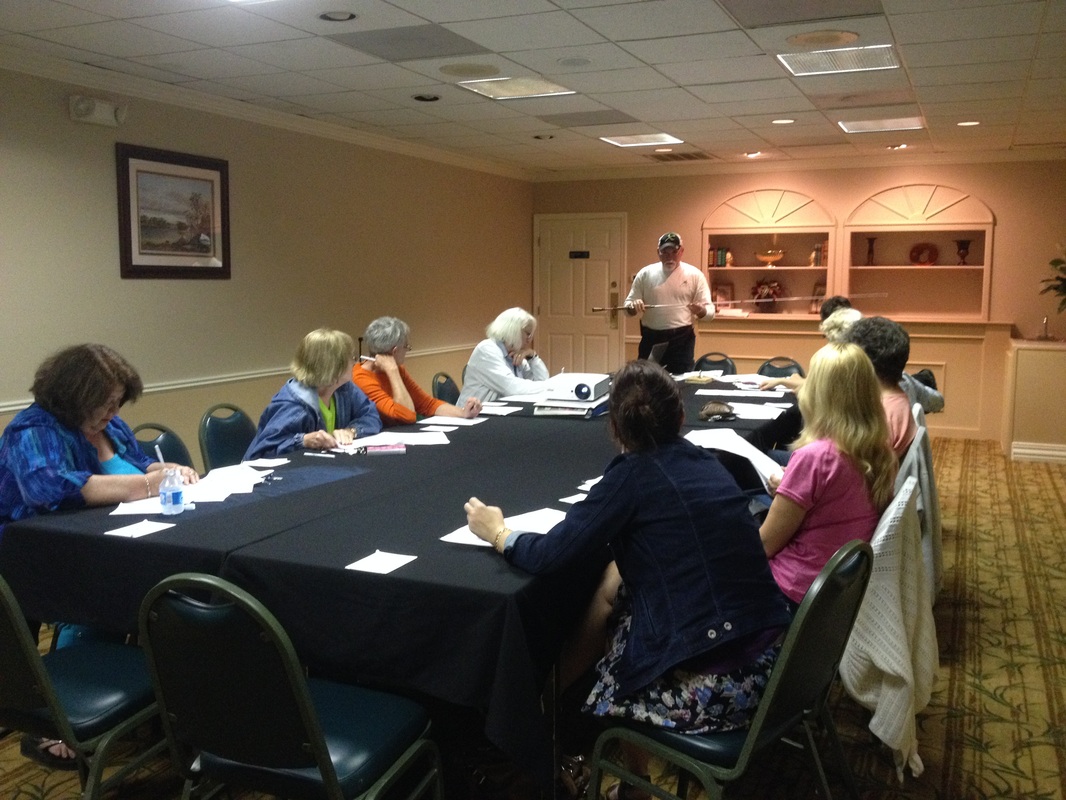
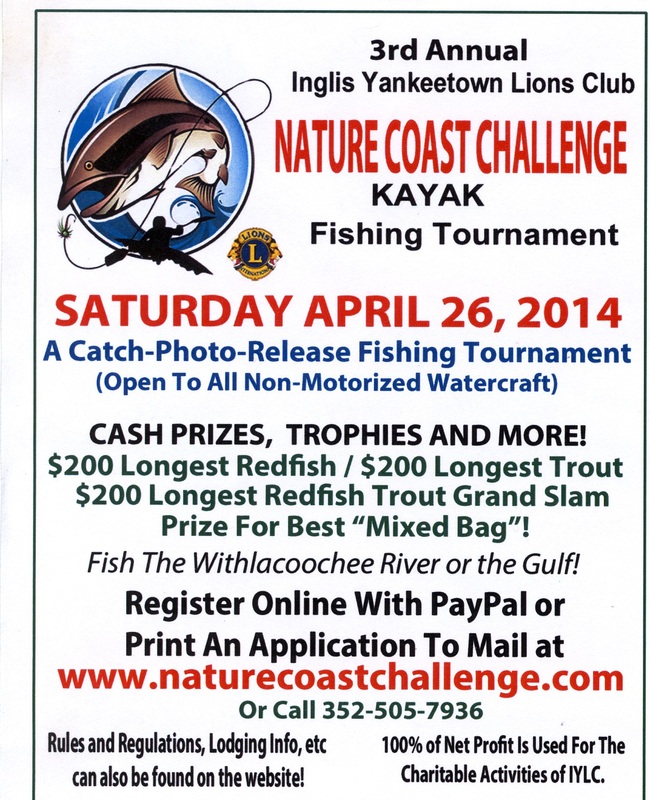
 RSS Feed
RSS Feed